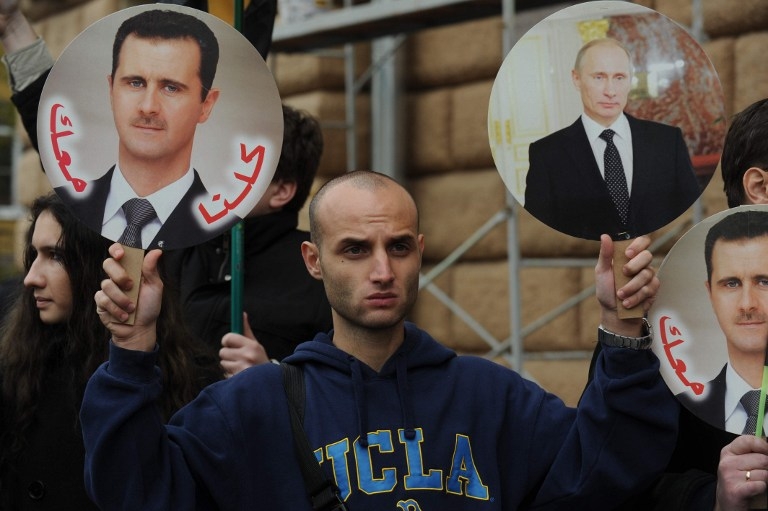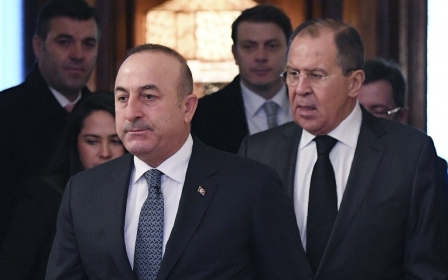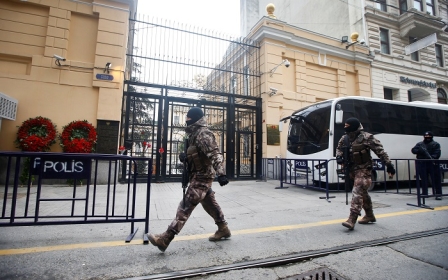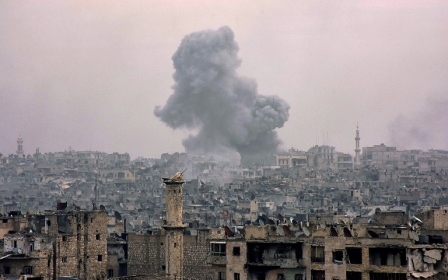Russia's Middle Eastern drive could dilute Europe's East-South divide

The fall of Aleppo shows painfully how Russia is largely given free hand in pressing forward its geopolitical interests with whatever means it chooses without fearing any consequences from the fading ‘international community’.
In its political stand-off with the US and the EU, Russia has purposefully employed the Southern Mediterranean – Europe’s soft underbelly, to gain leverage over the transatlantic partners
There are many reasons why the United States and Europe have refrained from putting more forceful pressure on Russia regarding Syria.
One important reason is that they have open fronts with Russia that they cannot gamble with, namely Russia’s behaviour in Eastern Europe and the real threat the Kremlin’s prowess poses to the Baltic States and Ukraine following the annexation of Crimea.
Unlike Eastern Europe, Syria – and the Middle East more broadly – is not among Moscow’s primary geopolitical concerns. In its political stand-off with the US and the EU, Russia has purposefully employed the southern Mediterranean – Europe’s soft underbelly – to gain leverage over the transatlantic partners.
Playing one arena off another
Much ink has been spilled already on how Moscow has reclaimed its role as a decisive player in the Middle East over the last few years, re-established a permanent military presence in the region and systematically expanded political, commercial and security ties.
Russia’s assets and modus operandi position it as an attractive alternative partner, patron, and leverage vehicle for regional powers and non-state actors in the Middle East. As a result, European and American policies become increasingly sidelined. As the Kremlin has extended its reach from its Eurasian periphery to the Middle East, it has been able to play one arena to raise its leverage in the other.
Arguably, the Kremlin’s efforts have fallen short of reaching any sort of ‘great bargain’, such as swapping Russian compliance in Syria for a lifting of the EU sanctions regime – a connection European officials have vigorously denied. But even short of direct asset swaps, the entanglement of Eurasian and Middle Eastern politics becomes increasingly evident.
The silver lining
For the Europeans, the geopolitical integration of its periphery may come with a potentially healthy side effect, as it forces them to adopt a more wholesome perspective of their relations with their neighbours.
In this vein, Russia's return to the Middle East could help dilute the informal internal divide of the EU’s foreign policy into a southern and eastern perspective. In the past, Brussels has been looking at Russia largely disconnected from geopolitical challenges in the Middle East.
The EU’s strategic environment has changed markedly with Russia’s annexation of Crimea, its intervention in Syria, and the election of Putin admirer Donald Trump as the next US president
It has seen Eurasia and the Arab world as two separate sub-divisions of its neighbourhood and has struggled to devise policies that reflect the interconnectedness in its periphery.
Widely differing interests, priorities and ties of the various EU member states with neighbouring countries in Eastern Europe and the Arab world, respectively, provided the basis for a long-standing informal division of labour among EU member states into a predominantly southern- and an eastern-looking camp.
Just as Germany and Poland were the driving forces behind the Eastern Partnership, France and Spain were the initiators of the Union for the Mediterranean. The competition among champions of the east and champions of the south has been reflected on many levels including budget lines, bureaucratic divisions, and expertise.
More recently, however, the divide appears to become softer. For example, Germany has been forced to take a close interest as a direct result of the refugee crisis; and barely engaged in the Maghreb only a few years ago, Berlin now leads Europe’s support to Tunisia’s transition.
Despite the differing priorities among member states, the Eastern and Southern dimensions of EU foreign policy remain formally assembled under a common policy umbrella, the European Neighbourhood Policy.
Yet, in the last two years, the EU’s strategic environment has changed markedly with Russia’s annexation of Crimea, its intervention in Syria, and the election of Putin admirer Donald Trump as the next US president.
Although Moscow’s possible aspirations to re-build its superpower status via the Middle East may have fallen short, Putin’s efforts to re-build Russian influence in the Middle East and North Africa weaken Western leverage and pose important challenges to the post-WW2 global security architecture.
As this panorama emerges ever more clearly, South and East champions within the EU must necessarily find greater overlaps. Perhaps it even leads to EU foreign policy being conceived as a response to external challenges, rather than as a group therapy among member states to get along.
- Kristina Kausch is a Senior Resident Fellow at the German Marshall Fund in Brussels. Join her on Twitter: @kristinakausch
The views expressed in this article belong to the author and do not necessarily reflect the editorial policy of Middle East Eye.
Photo: A man holds portrait of Russian President Vladmir Putin and Syria's President Bashar al-Assad during a rally in Moscow, Russia (AFP)
Middle East Eye propose une couverture et une analyse indépendantes et incomparables du Moyen-Orient, de l’Afrique du Nord et d’autres régions du monde. Pour en savoir plus sur la reprise de ce contenu et les frais qui s’appliquent, veuillez remplir ce formulaire [en anglais]. Pour en savoir plus sur MEE, cliquez ici [en anglais].







